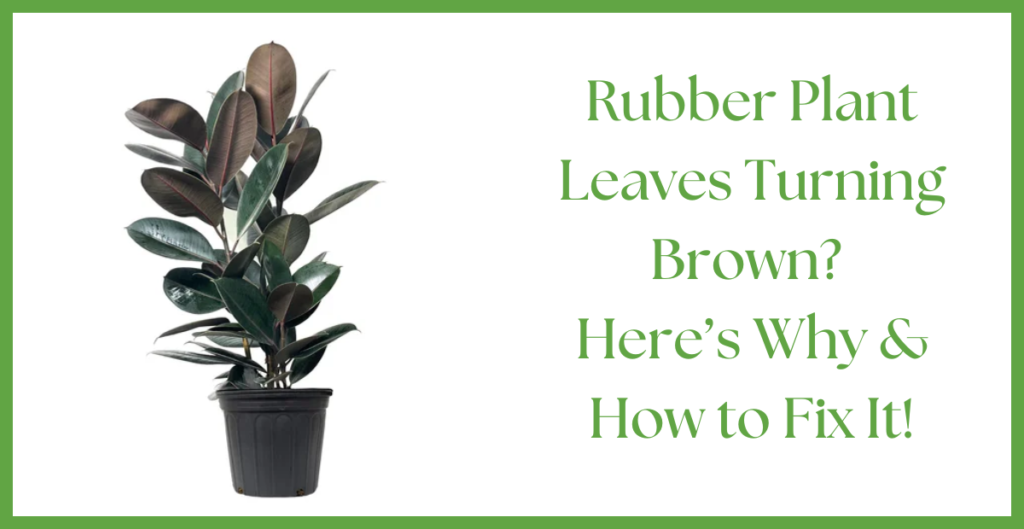Rubber plants (Ficus elastica) are loved for their lush, glossy leaves and easygoing nature. But if you start noticing brown edges or spots on the leaves, it’s a sign that something’s off. The good news? Your rubber plant is trying to tell you what’s wrong and with the right care, you can bring it back to its healthy, vibrant state.
In this guide, we’ll explore the most common reasons for browning leaves and share simple fixes to keep your rubber plant thriving.
1. Overwatering
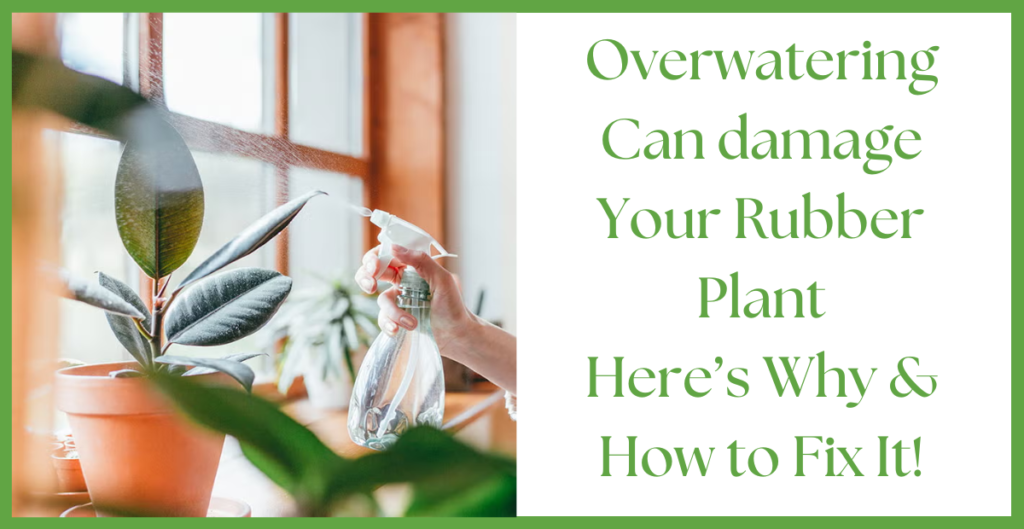
How Overwatering Damages Your Rubber Plant
Overwatering is one of the biggest reasons rubber plants develop brown, mushy edges. When the roots sit in soggy soil for too long, they can’t take in oxygen properly. This leads to root rot, poor nutrient absorption, and, eventually, browning leaves.
How to Fix It
- Stick your finger about an inch into the soil if it’s still damp, wait before watering again.
- Use well-draining soil with ingredients like perlite or orchid bark.
- Make sure your pot has drainage holes, and empty any excess water from saucers.
- Water the plant only when the top inch of soil has dried out.
Read More About How to Plant Lucky Bamboo in Soil?
2. Poor Drainage
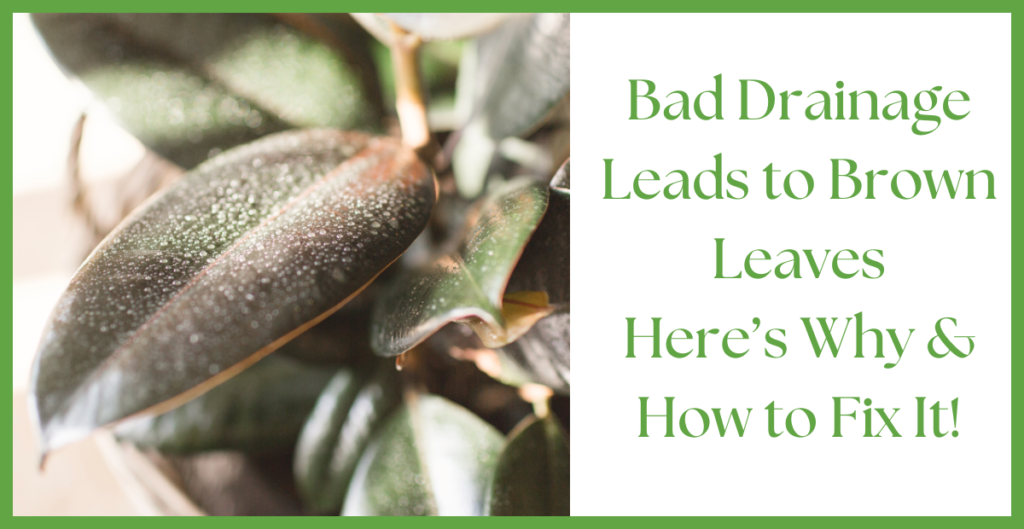
Why Bad Drainage Leads to Brown Leaves
Even if you’re watering correctly, soil that doesn’t drain well can cause water to sit at the roots for too long. This creates the same issues as overwatering root stress and brown, unhealthy leaves.
How to Improve Drainage
- Choose pots with multiple drainage holes.
- Avoid using decorative pots without drainage unless there’s an inner pot with proper holes.
- After watering, always dump out excess water from trays or cache pots.
- Use a lightweight, airy soil mix instead of heavy garden soil.
3. Lack of Light
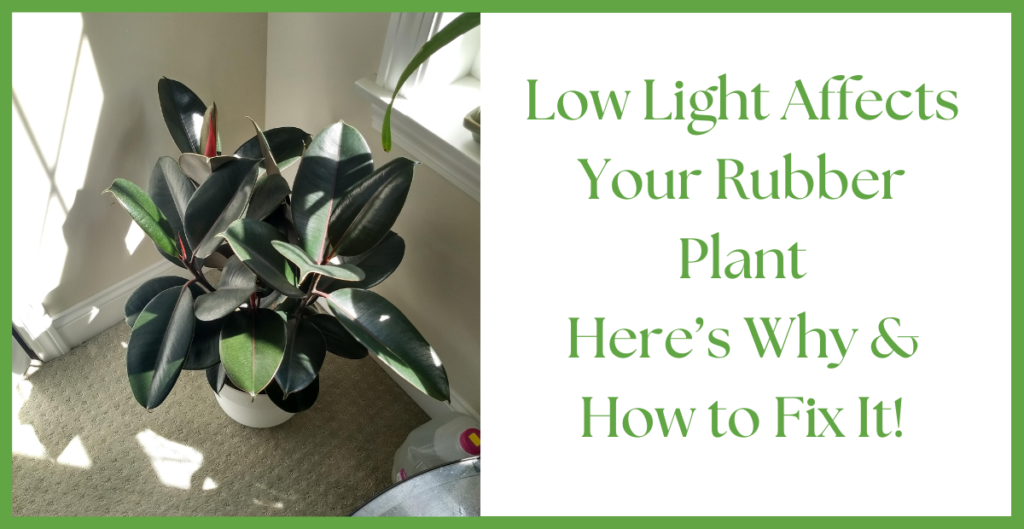
How Low Light Affects Your Rubber Plant
Rubber plants love bright, indirect light. If they’re sitting in a dark corner, they won’t absorb water properly, leading to slow growth and a higher risk of overwatering. This can result in brown edges on the leaves.
How to Fix It
- Place your rubber plant near a bright window with indirect sunlight, like a south- or west-facing window.
- If there isn’t enough natural light, use a grow light as a supplement.
- Keep it away from direct afternoon sunlight to prevent leaf scorching.
4. Underwatering
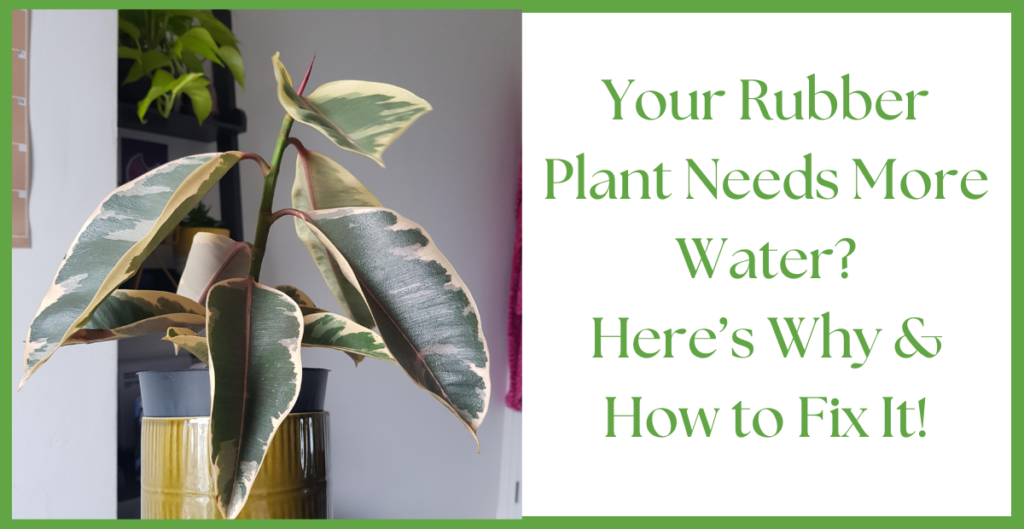
Signs Your Rubber Plant Needs More Water
On the flip side, if your rubber plant isn’t getting enough water, the leaves will dry out, starting with crispy brown edges. This usually affects the older leaves first, as the plant prioritizes newer growth.
How to Bring It Back to Life
- If the soil is bone dry, give your plant a deep drink by placing it in a tray of water for 15-20 minutes.
- Stick to a consistent watering schedule and allow the top inch of soil to dry out before watering again.
- Boost humidity with a pebble tray or by grouping plants together.
5. Temperature Swings
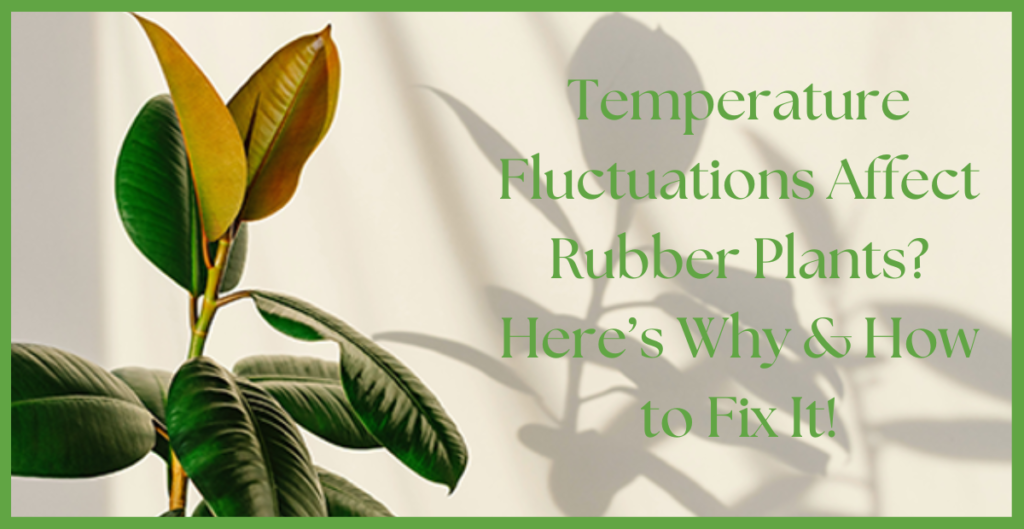
How Temperature Fluctuations Affect Rubber Plants
Rubber plants like it warm between 65°F and 85°F (18°C – 29°C). Sudden exposure to cold drafts, heaters, or air conditioning can shock the plant, causing brown spots and even leaf drops.
How to Protect Your Plant
- Keep it away from heaters, air conditioners, and drafty windows.
- Avoid placing it near doors that frequently open in winter.
- Try to maintain a stable indoor temperature year-round.
Final Thoughts
Brown leaves on your rubber plant can be worrying, but don’t panic! With a little attention to watering, drainage, light, and temperature, your plant can bounce back and keep growing beautifully.
Have you had this issue with your rubber plant? Share your experience in the comments below!
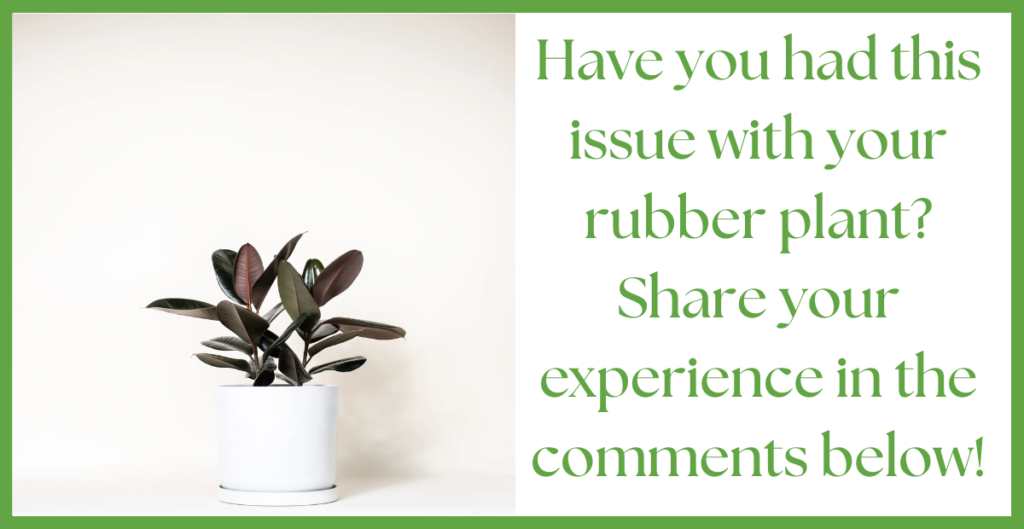
Frequently Asked Questions
– Should I Cut Off Brown Leaves?
Yes! Use clean, sterilized scissors to trim away any brown or dead leaves. This allows the plant to channel its energy into fresh, healthy growth.
– How Can I Tell If My Rubber Plant Is Happy?
A happy rubber plant has large, glossy green leaves and grows steadily—sometimes up to 24 inches per year in ideal conditions.
– Do Rubber Plants Need Misting?
Not really. They do fine in normal indoor humidity. Instead of misting, wipe the leaves with a damp cloth to keep them clean and help them absorb light better.
– The rubber plant is an indoor plant?
Yes, the rubber plant indoors is a popular and versatile houseplant that can be grown indoors.

